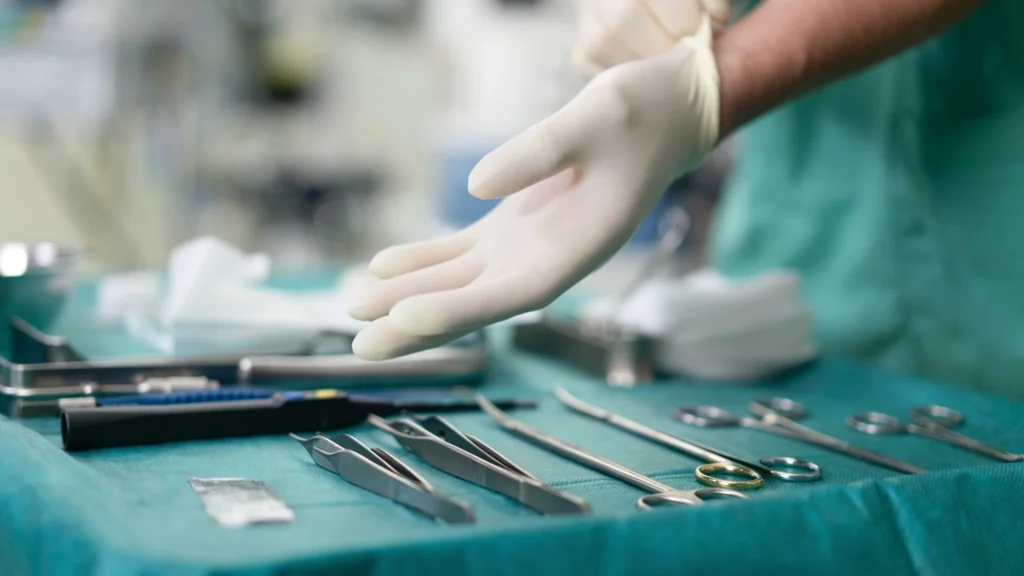
Table of Contents
ToggleSpine surgery is a very delicate procedure. It is important to have the right tools and instruments to get the job done right. The most common instruments used during spine surgery are:
The scalpel, forceps, and retractor which are used to make incisions in the skin and other tissues.
The specialized tools utilized during spine surgery are of utmost importance to ensure a successful procedure.
It is the responsibility of the surgical team to source these instruments from reputable suppliers, guaranteeing that your surgeon has access to everything needed for the operation at hand.
Surgical instruments are made of a variety of materials, including steel, stainless steel, and titanium. These materials are chosen for their durability and ability to withstand high temperatures, which is important when instruments need to be sterilized in an autoclave or radiation machine.
The most common material used in surgical instruments is steel. Steel has been used for centuries as a material for surgical tools because it is durable and easy to clean. Steel instruments can be sterilized in an autoclave or radiation machine and reused many times over without losing their sharpness or effectiveness.
Stainless steel is also often used in surgical equipment because it is resistant to corrosion by chemicals and does not rust easily.
Titanium is another option that has become more popular recently because it’s extremely durable and lightweight—it’s often used in orthopedic surgeries where the patient needs less stress on their body while they’re healing from surgery.
As a patient, you’ll want to know what tools will be used during your surgery. The most common instruments include:
Calipers and Gauges
These are used to measure the size of bones or other body parts. They come in many shapes and sizes depending on their purpose. For example, there are different types of calipers for measuring patients’ heads (cranial calipers) as well as their feet (pediatric).
Curettes
These tools have sharp edges that can be used to scrape away tissue during an operation or procedure on a patient’s spine.
Elevators and Spreaders
These tools help surgeons separate muscles so they can see clearly where they want them cut open during an operation or procedure on a patient’s spine; this way there isn’t any bleeding during surgery because nothing is being damaged internally by accident!
Forceps
Forceps are often used along with other instruments such as scissors or hooks when removing small pieces of bone after surgery has been completed successfully without complications occurring unexpectedly.

Spine surgery is a common procedure that can be performed to treat back pain, spinal stenosis and other conditions of the spine.
There are several types of spinal surgeries including:
Spinal fusion
This involves removing damaged discs and fusing together two vertebrae in order to create one solid bone. A plate or rod may be placed between the fused vertebrae in order to provide additional stability and strength.
Laminectomy
This type of procedure involves removing part or all of an abnormal lamina (the bony structure surrounding your spinal cord). This allows for better access to nerves that are causing your pain so that they can be treated directly with injections or other therapies such as nerve blocks.
Discectomy
This involves removing all or part of the disc and relieving pressure on surrounding tissues. In order to perform this type of surgery, doctors must first make an incision through skin and muscle layers, then remove any damaged tissue before finally closing wounds with stitches.
Laminectomy and laminotomy are surgical procedures that remove part of the vertebral body. This allows spinal cord compression to be relieved, which improves a patient’s symptoms.
Laminectomy is performed when only a small amount of bone needs to be removed in order for the spine to decompress. Laminotomy is performed when more bone must be removed from around your spinal canal or nerve roots (ganglia).
During these types of surgeries, surgeons use different tools depending on how far up into your back they need to go and what type of procedure they will be doing: curettes, elevator are some of the instruments that your surgeon will use.
The most common surgery instruments used during spinal disc removal are a scalpel, retractors, needle holders and scissors.
Scalpel: A scalpel is a surgical instrument used to make incisions in the skin or other soft tissues. Scalpels consist of a handle attached to a blade or set of blades.
The blade is usually made of steel or another hard, thin metal. It can be single-use and disposable or reusable, disinfected for re-use after cleaning.
The retractor: The retractor is used to hold back the muscle tissue and blood vessels from the area where the surgeon wants to cut or remove tissue.
Retractors may be straight or curved, with curved retractors being more comfortable for patients than straight ones. They may also come as one piece or in sets that can be joined together as needed during an operation.
Needle holder: Needle holders are designed to hold needles at an angle that allows them to penetrate easily into skin without damaging surrounding tissues during injections of medications and other treatments performed during surgery procedures on patients’ bodies and limbs without causing any pain or discomfort.
Those devices help reduce pain and discomfort by allowing doctors reduce their need for using multiple needles when performing surgeries on patients’ bodies.

Screws, rods and plates are some of the most common and important tools used during spinal fusion surgery.
Screws are used to hold two vertebrae together during fusion. They can be placed at different angles depending on how close together your surgeon wants them to be after surgery.
Rods are also used to hold two vertebrae together during fusion but they’re placed side-by-side instead of end-to-end like screws are.
Plates and cages are used in addition to screws or rods because they help stabilize the spine so that it doesn’t move around after surgery as much as it could without support from these devices (which is called “motion preservation”).
It is important that you understand the various steps in maintaining the surgical instruments and how they are used during your procedure.
Sterilization: This is one of the most critical aspects of care and maintenance when it comes to using surgical instruments. All surgical devices must be sterilized before use, which means they have been subjected to high temperatures that destroy all microorganisms and viruses on them.
This prevents infection from spreading during surgery as well as between patients and healthcare providers who come into contact with these items after they’ve been used on another patient (such as doctors).
Storage: Once an item has been sterilized, it should then be stored properly so that no further damage occurs during this time period until needed again.
The most common way to do this is to store them in a sterile package, or in a sterile container. Sterile packaging is any type of packaging that does not allow air or moisture to enter.
As you can see, there are many different types of surgery instruments that are used in spine surgery.
It is important to understand which type of instrument will be used during your procedure so that you can feel confident that everything will go smoothly and safely.
The best thing about these instruments is their durability; they will last for years if properly cared for!
GET IN TOUCH +
285 Sills Road
Building 5-6, Suite E
East Patchogue, NY 11772
(631) 475-5511
184 N. Belle Mead Road
East Setauket, NY 11733
(631) 675-6226
GET IN TOUCH +
285 Sills Road
Building 5-6, Suite E
East Patchogue, NY 11772
(631) 475-5511
184 N. Belle Mead Road
East Setauket, NY 11733
(631) 675-6226
SUBSCRIBE TO OUR NEWSLETTER +
Send us a Google review. Click this link and let us know how we did!
Review us on Yelp too.